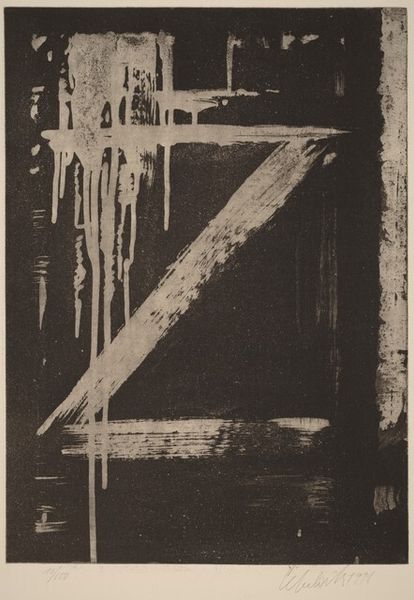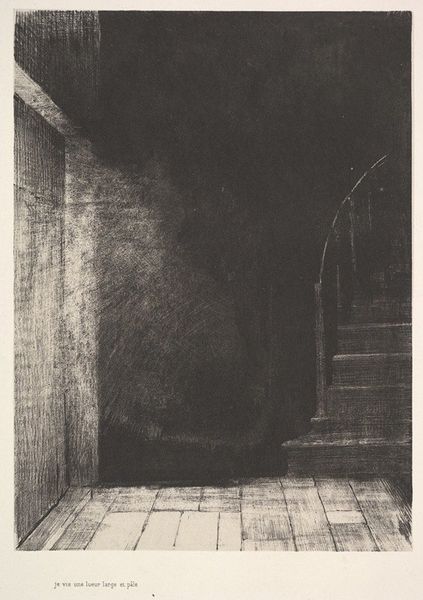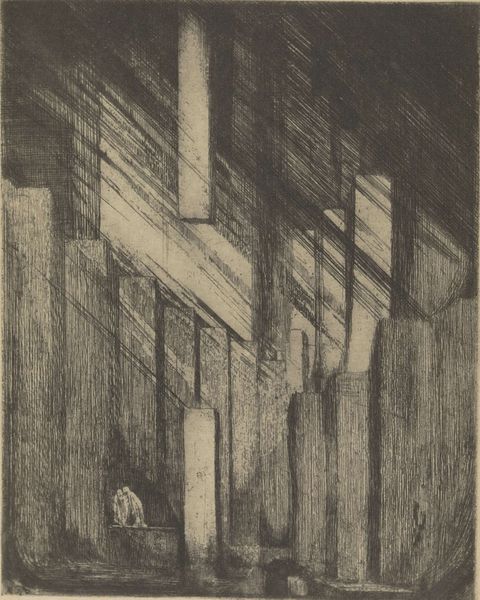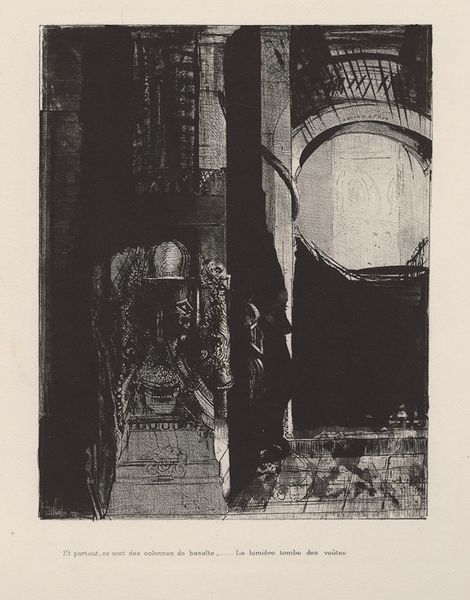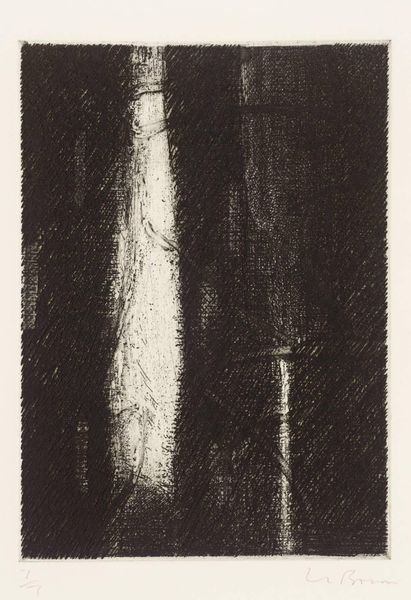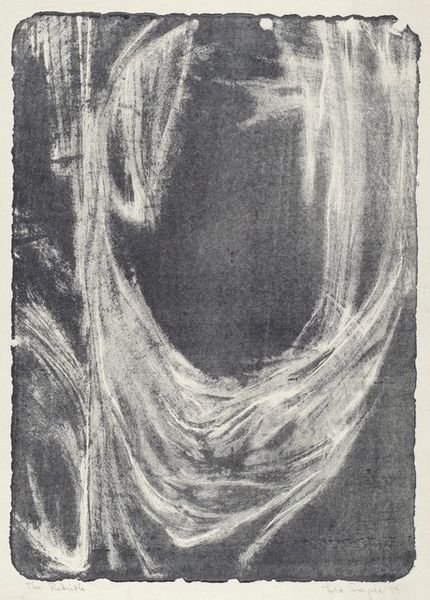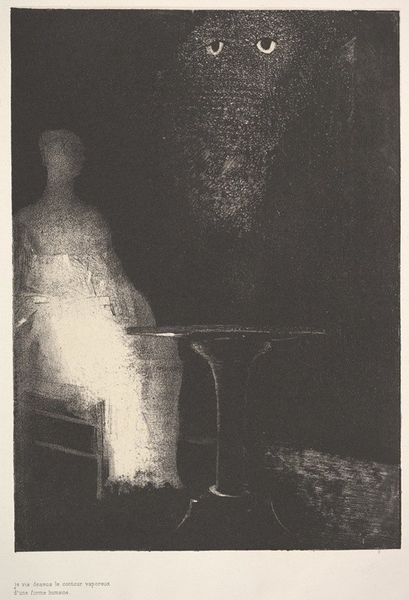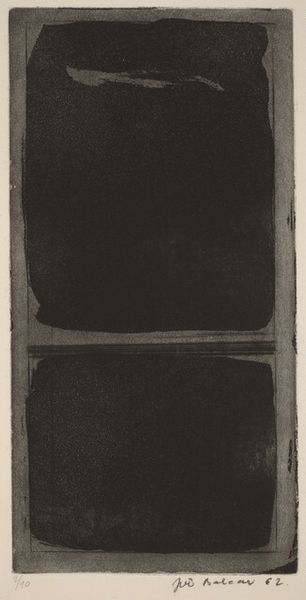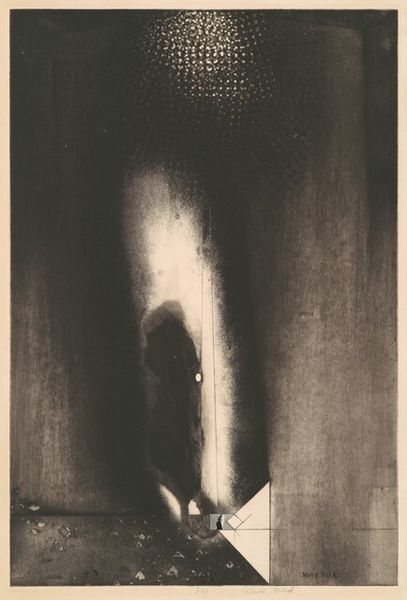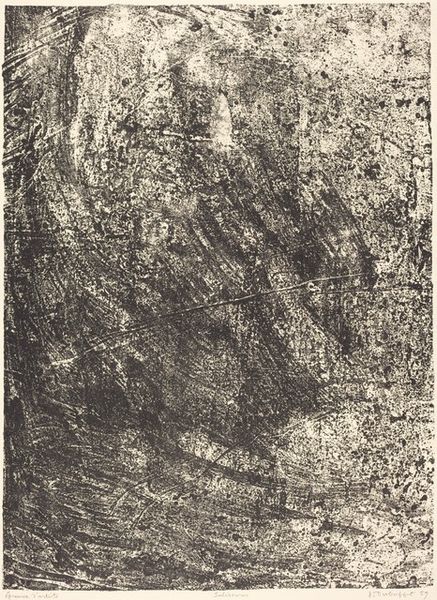
Copyright: National Gallery of Art: CC0 1.0
Editor: So, this is "Night in Ely Cathedral," a 1915 etching by James McBey. It's incredibly atmospheric, almost overwhelming in its darkness. What do you see in this piece? Curator: Immediately, the masterful manipulation of light and shadow commands attention. Consider the composition: the towering verticality of the cathedral interior is starkly contrasted against the horizontal plane of the floor. Editor: It feels almost like the darkness is a physical presence. How does that relate to the lines? Curator: Precisely. Observe how McBey employs densely layered, short, and agitated lines to conjure the oppressive darkness. This deliberate technique amplifies the dramatic tension and imbues the architecture with a sense of mass. In doing so the artist directs the viewers eyes toward to concentrated patch of light. How does the artist then bring you into the interior of this image? Editor: By including a small number of figures on the bottom-left and center? Curator: The figures provide a visual anchor. More so they subtly guide our gaze deeper into the architectural void, heightening our awareness of its scale. The etcher’s technical brilliance shines in this. Editor: I see. The darkness isn't just an absence of light; it's actively shaping the space. Curator: Indeed. This etching showcases McBey's sophisticated control over the medium to evoke a powerful and immersive visual experience. Do you find yourself interpreting this scene to have spiritual undertones or a purely secular purpose in its representational accuracy? Editor: It strikes me that I am merely drawn to the shapes themselves in contrast and harmony with the shadows, divorced from purpose. Thank you. Curator: And the shapes are merely formed and exist in tandem, without one they cannot exist. It has been most enlightening to share the semiotics with you, let us now turn our gaze toward the other pieces.
Comments
No comments
Be the first to comment and join the conversation on the ultimate creative platform.
